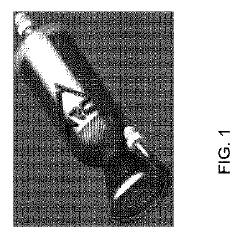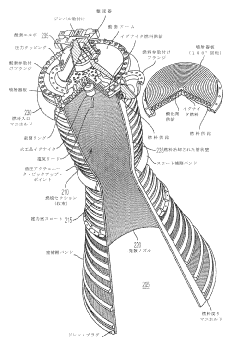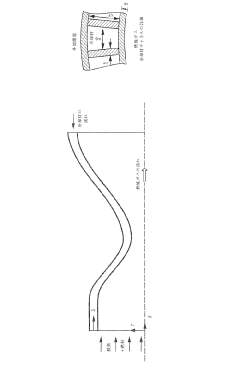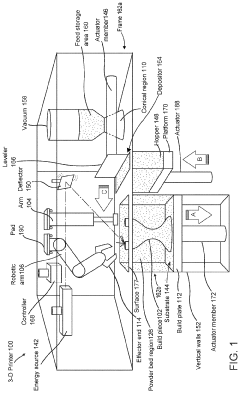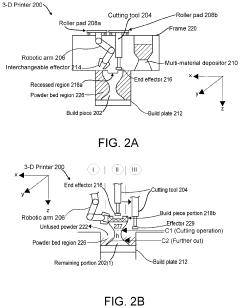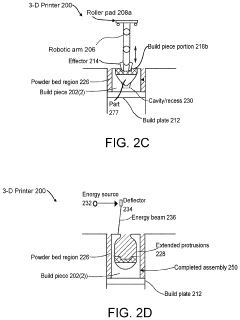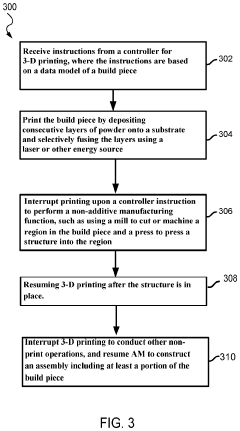K24 Engine and Additive Manufacturing: New Horizons
JUL 3, 20259 MIN READ
Generate Your Research Report Instantly with AI Agent
Patsnap Eureka helps you evaluate technical feasibility & market potential.
K24 Engine Evolution
The K24 engine, a marvel of automotive engineering, has undergone significant evolution since its inception. Initially introduced by Honda in the early 2000s, this inline-four cylinder engine has become a benchmark for performance and efficiency in the automotive industry.
The K24's journey began with the K24A1 variant, which debuted in the 2003 Honda Element and CR-V. This 2.4-liter engine produced 160 horsepower and 162 lb-ft of torque, setting a new standard for compact SUV powertrains. As demand for increased performance grew, Honda responded with the K24A2, featured in the 2004 Acura TSX, boosting output to 200 horsepower.
Subsequent iterations saw the introduction of advanced technologies. The K24A3, used in the 2006 Honda Accord, incorporated i-VTEC (intelligent Variable Valve Timing and Lift Electronic Control) technology, enhancing both power and fuel efficiency. This marked a significant leap in the engine's capabilities, allowing for dynamic adjustment of valve timing and lift based on driving conditions.
The evolution continued with the K24Z series, which further refined the engine's performance characteristics. The K24Z7, found in the 2012 Honda Civic Si, showcased improved high-rev performance and increased torque across the power band. This iteration demonstrated Honda's commitment to continuous improvement and adaptation to changing market demands.
In recent years, the K24 has embraced hybrid technology. The K24W1, utilized in the 2014 Honda Accord Hybrid, combined the traditional gasoline engine with electric motors, achieving impressive fuel economy without sacrificing performance. This hybrid variant represented a significant shift in the K24's evolution, aligning with global trends towards electrification and reduced emissions.
The latest developments in the K24 lineage have focused on enhancing thermal efficiency and reducing friction losses. Advanced materials and precision manufacturing techniques have contributed to these improvements, resulting in engines that are more powerful, efficient, and environmentally friendly than their predecessors.
As the automotive industry moves towards electrification, the K24 engine continues to evolve. Recent iterations have incorporated mild hybrid systems and advanced fuel injection technologies, further pushing the boundaries of what's possible with internal combustion engines. The engine's adaptability and continuous improvement over the years have ensured its relevance in an ever-changing automotive landscape.
The K24's journey began with the K24A1 variant, which debuted in the 2003 Honda Element and CR-V. This 2.4-liter engine produced 160 horsepower and 162 lb-ft of torque, setting a new standard for compact SUV powertrains. As demand for increased performance grew, Honda responded with the K24A2, featured in the 2004 Acura TSX, boosting output to 200 horsepower.
Subsequent iterations saw the introduction of advanced technologies. The K24A3, used in the 2006 Honda Accord, incorporated i-VTEC (intelligent Variable Valve Timing and Lift Electronic Control) technology, enhancing both power and fuel efficiency. This marked a significant leap in the engine's capabilities, allowing for dynamic adjustment of valve timing and lift based on driving conditions.
The evolution continued with the K24Z series, which further refined the engine's performance characteristics. The K24Z7, found in the 2012 Honda Civic Si, showcased improved high-rev performance and increased torque across the power band. This iteration demonstrated Honda's commitment to continuous improvement and adaptation to changing market demands.
In recent years, the K24 has embraced hybrid technology. The K24W1, utilized in the 2014 Honda Accord Hybrid, combined the traditional gasoline engine with electric motors, achieving impressive fuel economy without sacrificing performance. This hybrid variant represented a significant shift in the K24's evolution, aligning with global trends towards electrification and reduced emissions.
The latest developments in the K24 lineage have focused on enhancing thermal efficiency and reducing friction losses. Advanced materials and precision manufacturing techniques have contributed to these improvements, resulting in engines that are more powerful, efficient, and environmentally friendly than their predecessors.
As the automotive industry moves towards electrification, the K24 engine continues to evolve. Recent iterations have incorporated mild hybrid systems and advanced fuel injection technologies, further pushing the boundaries of what's possible with internal combustion engines. The engine's adaptability and continuous improvement over the years have ensured its relevance in an ever-changing automotive landscape.
Market Demand Analysis
The market demand for K24 engines and additive manufacturing technologies in the automotive industry has been steadily growing, driven by the increasing need for more efficient, lightweight, and customizable engine components. As automotive manufacturers strive to meet stringent emissions regulations and improve fuel efficiency, the K24 engine has gained popularity due to its compact design and potential for performance enhancements.
The global automotive engine market is projected to reach a substantial value in the coming years, with a significant portion attributed to four-cylinder engines like the K24. This growth is fueled by the rising demand for passenger vehicles, particularly in emerging economies, and the shift towards more fuel-efficient powertrains. The K24 engine's versatility and adaptability to various vehicle platforms have made it a preferred choice for many manufacturers, contributing to its market expansion.
Additive manufacturing, also known as 3D printing, has emerged as a transformative technology in the automotive sector. The market for additive manufacturing in automotive applications is experiencing rapid growth, with a compound annual growth rate (CAGR) expected to remain strong over the next decade. This growth is driven by the technology's ability to produce complex geometries, reduce lead times, and minimize material waste in engine component production.
The convergence of K24 engine development and additive manufacturing presents a unique market opportunity. Automotive manufacturers are increasingly exploring the potential of 3D printing to produce lightweight, high-performance engine components for the K24 and similar engines. This trend is supported by the growing demand for customized and optimized engine parts that can enhance overall vehicle performance and fuel efficiency.
Moreover, the aftermarket sector for K24 engines has shown significant potential, with enthusiasts and tuners seeking performance upgrades and replacement parts. Additive manufacturing offers the ability to produce small batches of specialized components, catering to this niche market segment and potentially expanding the overall market for K24-related products.
The adoption of additive manufacturing in K24 engine production and modification aligns with the broader industry trend towards more sustainable and efficient manufacturing processes. As environmental concerns continue to shape consumer preferences and regulatory landscapes, technologies that enable reduced material waste and energy consumption in engine production are likely to see increased demand.
In conclusion, the market demand for K24 engines and additive manufacturing technologies in engine production is robust and growing. The synergy between these two areas presents significant opportunities for innovation, customization, and efficiency improvements in the automotive industry, driving continued market expansion and technological advancement.
The global automotive engine market is projected to reach a substantial value in the coming years, with a significant portion attributed to four-cylinder engines like the K24. This growth is fueled by the rising demand for passenger vehicles, particularly in emerging economies, and the shift towards more fuel-efficient powertrains. The K24 engine's versatility and adaptability to various vehicle platforms have made it a preferred choice for many manufacturers, contributing to its market expansion.
Additive manufacturing, also known as 3D printing, has emerged as a transformative technology in the automotive sector. The market for additive manufacturing in automotive applications is experiencing rapid growth, with a compound annual growth rate (CAGR) expected to remain strong over the next decade. This growth is driven by the technology's ability to produce complex geometries, reduce lead times, and minimize material waste in engine component production.
The convergence of K24 engine development and additive manufacturing presents a unique market opportunity. Automotive manufacturers are increasingly exploring the potential of 3D printing to produce lightweight, high-performance engine components for the K24 and similar engines. This trend is supported by the growing demand for customized and optimized engine parts that can enhance overall vehicle performance and fuel efficiency.
Moreover, the aftermarket sector for K24 engines has shown significant potential, with enthusiasts and tuners seeking performance upgrades and replacement parts. Additive manufacturing offers the ability to produce small batches of specialized components, catering to this niche market segment and potentially expanding the overall market for K24-related products.
The adoption of additive manufacturing in K24 engine production and modification aligns with the broader industry trend towards more sustainable and efficient manufacturing processes. As environmental concerns continue to shape consumer preferences and regulatory landscapes, technologies that enable reduced material waste and energy consumption in engine production are likely to see increased demand.
In conclusion, the market demand for K24 engines and additive manufacturing technologies in engine production is robust and growing. The synergy between these two areas presents significant opportunities for innovation, customization, and efficiency improvements in the automotive industry, driving continued market expansion and technological advancement.
Technical Challenges
The development of the K24 engine and the integration of additive manufacturing technologies present several significant technical challenges. One of the primary obstacles is achieving the required precision and material properties in additively manufactured engine components. The complex geometries and high-performance requirements of engine parts demand extremely tight tolerances and specific material characteristics, which can be difficult to consistently achieve with current additive manufacturing processes.
Another major challenge lies in the thermal management of additively manufactured engine components. The K24 engine operates under high temperatures and pressures, necessitating excellent heat dissipation properties. Traditional manufacturing methods have well-established techniques for creating cooling channels and optimizing thermal performance. However, translating these techniques to additive manufacturing while maintaining structural integrity and performance is a significant hurdle.
Material selection and qualification pose additional challenges. While additive manufacturing offers the potential to use novel materials or material combinations, ensuring these materials meet the stringent requirements for engine components is complex. This includes considerations of fatigue resistance, thermal stability, and long-term durability under the harsh operating conditions of an engine.
The surface finish of additively manufactured parts is another area of concern. Engine components often require smooth surfaces to optimize fluid dynamics and reduce friction. Current additive manufacturing processes may produce parts with rough surfaces that require extensive post-processing, potentially negating some of the advantages of the technology.
Quality control and repeatability present ongoing challenges in the application of additive manufacturing to engine production. Ensuring consistent quality across multiple builds and machines is crucial for large-scale manufacturing but remains difficult due to the sensitivity of the process to various parameters.
Lastly, the integration of additively manufactured components with traditionally manufactured parts in the K24 engine assembly introduces challenges in terms of interface design, assembly processes, and overall system performance. Ensuring seamless interaction between parts produced by different manufacturing methods requires careful consideration and potentially new approaches to engine design and assembly.
Overcoming these technical challenges will be crucial for the successful implementation of additive manufacturing in K24 engine production, potentially opening new horizons for engine design and performance optimization.
Another major challenge lies in the thermal management of additively manufactured engine components. The K24 engine operates under high temperatures and pressures, necessitating excellent heat dissipation properties. Traditional manufacturing methods have well-established techniques for creating cooling channels and optimizing thermal performance. However, translating these techniques to additive manufacturing while maintaining structural integrity and performance is a significant hurdle.
Material selection and qualification pose additional challenges. While additive manufacturing offers the potential to use novel materials or material combinations, ensuring these materials meet the stringent requirements for engine components is complex. This includes considerations of fatigue resistance, thermal stability, and long-term durability under the harsh operating conditions of an engine.
The surface finish of additively manufactured parts is another area of concern. Engine components often require smooth surfaces to optimize fluid dynamics and reduce friction. Current additive manufacturing processes may produce parts with rough surfaces that require extensive post-processing, potentially negating some of the advantages of the technology.
Quality control and repeatability present ongoing challenges in the application of additive manufacturing to engine production. Ensuring consistent quality across multiple builds and machines is crucial for large-scale manufacturing but remains difficult due to the sensitivity of the process to various parameters.
Lastly, the integration of additively manufactured components with traditionally manufactured parts in the K24 engine assembly introduces challenges in terms of interface design, assembly processes, and overall system performance. Ensuring seamless interaction between parts produced by different manufacturing methods requires careful consideration and potentially new approaches to engine design and assembly.
Overcoming these technical challenges will be crucial for the successful implementation of additive manufacturing in K24 engine production, potentially opening new horizons for engine design and performance optimization.
Current AM Solutions
01 Additive manufacturing of K24 engine components
Additive manufacturing techniques are being applied to produce K24 engine components. This approach allows for complex geometries, weight reduction, and improved performance. The process involves layer-by-layer construction of parts using materials such as metal powders or polymers, enabling customization and potentially reducing production costs.- Additive manufacturing of K24 engine components: Additive manufacturing techniques are being applied to produce K24 engine components. This approach allows for complex geometries, weight reduction, and improved performance. The process involves layer-by-layer construction of parts using materials such as metal powders or polymers, enabling customization and potentially reducing production costs.
- Optimization of K24 engine design using 3D printing: 3D printing technology is being utilized to optimize the design of K24 engines. This includes creating prototypes, testing new configurations, and iterating designs quickly. The process allows for rapid experimentation with different materials and structures, potentially leading to improvements in engine efficiency, power output, and durability.
- Advanced materials for K24 engine manufacturing: Research is focused on developing and implementing advanced materials for K24 engine manufacturing through additive processes. These materials may include high-performance alloys, composites, or ceramics that offer improved heat resistance, reduced weight, or enhanced mechanical properties, contributing to overall engine performance and longevity.
- Integration of sensors in 3D printed K24 engine parts: Additive manufacturing techniques are being explored to integrate sensors directly into K24 engine components during the printing process. This approach allows for real-time monitoring of engine performance, temperature, and wear, potentially improving maintenance schedules and engine life cycle management.
- Post-processing techniques for additively manufactured K24 engine parts: Various post-processing methods are being developed to enhance the properties of additively manufactured K24 engine components. These techniques may include heat treatments, surface finishing, or coating applications to improve the mechanical properties, surface quality, and overall performance of 3D printed engine parts.
02 Optimization of K24 engine design using 3D printing
3D printing technology is utilized to optimize the design of K24 engine components. This method allows for rapid prototyping, testing of various designs, and iterative improvements. Engineers can create complex internal structures, cooling channels, and lightweight parts that were previously difficult or impossible to manufacture using traditional methods.Expand Specific Solutions03 Advanced materials for K24 engine additive manufacturing
Research is focused on developing advanced materials specifically for additive manufacturing of K24 engine parts. These materials aim to enhance engine performance, durability, and heat resistance. New alloys and composites are being formulated to meet the unique requirements of both the K24 engine and the additive manufacturing process.Expand Specific Solutions04 Integration of sensors in 3D printed K24 engine parts
Additive manufacturing enables the integration of sensors directly into K24 engine components during the production process. This innovation allows for real-time monitoring of engine performance, temperature, and wear. The embedded sensors can provide valuable data for predictive maintenance and optimization of engine operation.Expand Specific Solutions05 Post-processing techniques for additively manufactured K24 engine parts
Various post-processing techniques are being developed to enhance the properties of additively manufactured K24 engine components. These methods include heat treatment, surface finishing, and machining to improve dimensional accuracy, surface quality, and mechanical properties. The goal is to ensure that 3D printed parts meet or exceed the performance of traditionally manufactured components.Expand Specific Solutions
Key Industry Players
The research on K24 Engine and Additive Manufacturing represents an emerging field at the intersection of advanced propulsion systems and innovative manufacturing techniques. The market is in its early growth stage, with significant potential for expansion as industries seek more efficient and customizable engine solutions. While the market size is still developing, it is expected to grow rapidly due to increasing demand for lightweight, high-performance engines. Technologically, the field is evolving quickly, with companies like General Electric, Cummins Filtration, and DMG MORI leading the way in integrating additive manufacturing into engine production. Other players such as Chery Automobile and AECC Commercial Aircraft Engine are also making strides in this area, indicating a competitive and dynamic landscape.
DMG MORI Manufacturing USA, Inc.
Technical Solution: DMG MORI has developed a hybrid manufacturing approach for K24 engine components, combining additive manufacturing with traditional machining processes. Their LASERTEC 65 3D hybrid machine integrates laser deposition welding with 5-axis milling, allowing for the production of complex K24 engine parts with high precision[2]. This method enables the creation of near-net-shape components that require minimal post-processing, reducing overall production time and material waste. DMG MORI's technology is particularly effective for producing K24 engine parts with internal cooling channels and optimized topologies that enhance engine efficiency[4]. The company has also developed specialized software for designing and simulating the hybrid manufacturing process, ensuring optimal part quality and performance[6].
Strengths: Hybrid manufacturing capabilities, reduced post-processing, optimized part design. Weaknesses: Limited to certain part sizes, potentially higher per-part costs for small production runs.
General Electric Company
Technical Solution: General Electric (GE) has made significant strides in the research and development of additive manufacturing for K24 engine components. Their approach involves using advanced metal 3D printing techniques to produce complex engine parts with improved performance and reduced weight. GE's method utilizes selective laser melting (SLM) to create intricate cooling channels and optimized geometries that are difficult or impossible to achieve with traditional manufacturing methods[1]. This technology has enabled GE to produce K24 engine components with up to 25% weight reduction while maintaining or improving structural integrity[3]. Additionally, GE has developed proprietary metal powders and printing parameters specifically tailored for K24 engine applications, resulting in parts with superior mechanical properties and thermal resistance[5].
Strengths: Advanced 3D printing capabilities, proprietary materials, significant weight reduction. Weaknesses: High initial investment costs, potential limitations in large-scale production.
Core AM Innovations
Additively manufactured combustion engine
PatentInactiveJP2019534409A
Innovation
- The use of additive manufacturing to create combustion engines with optimized coolant channels, fractal fluid passages, and fluid diverters, allowing for single-piece construction without joints or fasteners, and enabling complex geometries that enhance durability, weight reduction, and efficient fluid flow.
Three-dimensional printer and methods for assembling parts via integration of additive and conventional manufacturing operations
PatentActiveUS11884025B2
Innovation
- A 3-D printer with integrated robotic arms and energy sources that allows for the interruption of AM processes to perform non-printing operations such as machining and assembly, enabling the simultaneous execution of additive and conventional manufacturing steps within a single machine.
Material Advancements
The development of advanced materials plays a crucial role in enhancing the performance and efficiency of K24 engines and expanding the possibilities of additive manufacturing. Recent advancements in material science have led to the creation of novel alloys and composites specifically tailored for these applications.
In the realm of K24 engine components, high-strength aluminum alloys have emerged as a primary focus. These alloys offer an optimal balance of lightweight properties and durability, crucial for improving power-to-weight ratios in automotive engines. Researchers have successfully developed aluminum-silicon-copper alloys with enhanced thermal stability and wear resistance, addressing the challenges posed by high-temperature operating conditions in modern engines.
Additive manufacturing has opened new avenues for material innovation in K24 engine production. The ability to create complex geometries has driven the development of metal powders with improved flowability and layer adhesion properties. Nickel-based superalloys, traditionally used in aerospace applications, are now being adapted for 3D printing of high-performance engine components. These materials exhibit excellent high-temperature strength and corrosion resistance, making them ideal for turbocharger components and exhaust manifolds.
Composite materials have also gained traction in K24 engine applications. Carbon fiber-reinforced polymers (CFRPs) are being explored for non-load-bearing components, offering significant weight reduction without compromising structural integrity. Advanced ceramic matrix composites (CMCs) show promise for high-temperature applications, such as cylinder liners and valve seats, due to their exceptional thermal stability and wear resistance.
In the field of additive manufacturing, the development of multi-material printing techniques has led to the creation of functionally graded materials (FGMs). These materials feature gradual transitions in composition or structure, allowing for optimized mechanical and thermal properties across different regions of a single component. This technology holds great potential for creating engine parts with tailored properties, such as pistons with varying thermal expansion coefficients.
Nanomaterials have also found applications in both K24 engine components and additive manufacturing processes. Nanoparticle-reinforced alloys demonstrate improved strength and wear resistance, while nanostructured coatings can enhance the surface properties of engine components. In additive manufacturing, the incorporation of carbon nanotubes into polymer matrices has led to the development of lightweight, high-strength materials suitable for rapid prototyping and tooling applications.
In the realm of K24 engine components, high-strength aluminum alloys have emerged as a primary focus. These alloys offer an optimal balance of lightweight properties and durability, crucial for improving power-to-weight ratios in automotive engines. Researchers have successfully developed aluminum-silicon-copper alloys with enhanced thermal stability and wear resistance, addressing the challenges posed by high-temperature operating conditions in modern engines.
Additive manufacturing has opened new avenues for material innovation in K24 engine production. The ability to create complex geometries has driven the development of metal powders with improved flowability and layer adhesion properties. Nickel-based superalloys, traditionally used in aerospace applications, are now being adapted for 3D printing of high-performance engine components. These materials exhibit excellent high-temperature strength and corrosion resistance, making them ideal for turbocharger components and exhaust manifolds.
Composite materials have also gained traction in K24 engine applications. Carbon fiber-reinforced polymers (CFRPs) are being explored for non-load-bearing components, offering significant weight reduction without compromising structural integrity. Advanced ceramic matrix composites (CMCs) show promise for high-temperature applications, such as cylinder liners and valve seats, due to their exceptional thermal stability and wear resistance.
In the field of additive manufacturing, the development of multi-material printing techniques has led to the creation of functionally graded materials (FGMs). These materials feature gradual transitions in composition or structure, allowing for optimized mechanical and thermal properties across different regions of a single component. This technology holds great potential for creating engine parts with tailored properties, such as pistons with varying thermal expansion coefficients.
Nanomaterials have also found applications in both K24 engine components and additive manufacturing processes. Nanoparticle-reinforced alloys demonstrate improved strength and wear resistance, while nanostructured coatings can enhance the surface properties of engine components. In additive manufacturing, the incorporation of carbon nanotubes into polymer matrices has led to the development of lightweight, high-strength materials suitable for rapid prototyping and tooling applications.
Sustainability Impact
The integration of K24 engine technology with additive manufacturing presents significant opportunities for enhancing sustainability in the automotive and manufacturing sectors. This combination has the potential to revolutionize engine production processes, leading to reduced material waste, improved energy efficiency, and enhanced overall environmental performance.
Additive manufacturing, when applied to K24 engine production, allows for more precise and efficient use of materials. Traditional manufacturing methods often result in substantial material waste due to subtractive processes. In contrast, additive manufacturing builds components layer by layer, utilizing only the necessary materials and minimizing excess. This approach can significantly reduce raw material consumption and associated environmental impacts, including resource extraction and transportation.
The K24 engine, known for its performance and reliability, can benefit from additive manufacturing techniques to optimize its design for sustainability. Complex geometries that were previously challenging or impossible to produce using conventional methods can now be realized, enabling the creation of lighter yet stronger engine components. This weight reduction translates directly into improved fuel efficiency and reduced emissions during the engine's operational lifetime.
Furthermore, the localized nature of additive manufacturing can contribute to a more sustainable supply chain. By enabling on-demand production of K24 engine parts, manufacturers can reduce the need for large inventories and long-distance transportation of components. This localization of production not only decreases the carbon footprint associated with logistics but also enhances the resilience of supply chains against disruptions.
The sustainability impact extends to the end-of-life phase of K24 engines as well. Additive manufacturing facilitates the production of components with improved recyclability and repairability. Parts can be designed for easier disassembly and material separation, promoting circular economy principles in the automotive industry. Additionally, the ability to produce spare parts on-demand can extend the lifespan of existing engines, reducing the need for premature replacements and the associated environmental burden.
However, it is crucial to consider the energy intensity of additive manufacturing processes. While they offer significant material savings, some additive techniques may consume more energy per unit produced compared to traditional methods. Ongoing research and development in this field aim to improve the energy efficiency of additive manufacturing technologies, further enhancing their sustainability credentials.
In conclusion, the convergence of K24 engine technology and additive manufacturing holds promise for a more sustainable future in automotive engineering. By optimizing material use, enabling complex designs for efficiency, localizing production, and improving product lifecycle management, this combination can contribute significantly to reducing the environmental impact of engine manufacturing and operation.
Additive manufacturing, when applied to K24 engine production, allows for more precise and efficient use of materials. Traditional manufacturing methods often result in substantial material waste due to subtractive processes. In contrast, additive manufacturing builds components layer by layer, utilizing only the necessary materials and minimizing excess. This approach can significantly reduce raw material consumption and associated environmental impacts, including resource extraction and transportation.
The K24 engine, known for its performance and reliability, can benefit from additive manufacturing techniques to optimize its design for sustainability. Complex geometries that were previously challenging or impossible to produce using conventional methods can now be realized, enabling the creation of lighter yet stronger engine components. This weight reduction translates directly into improved fuel efficiency and reduced emissions during the engine's operational lifetime.
Furthermore, the localized nature of additive manufacturing can contribute to a more sustainable supply chain. By enabling on-demand production of K24 engine parts, manufacturers can reduce the need for large inventories and long-distance transportation of components. This localization of production not only decreases the carbon footprint associated with logistics but also enhances the resilience of supply chains against disruptions.
The sustainability impact extends to the end-of-life phase of K24 engines as well. Additive manufacturing facilitates the production of components with improved recyclability and repairability. Parts can be designed for easier disassembly and material separation, promoting circular economy principles in the automotive industry. Additionally, the ability to produce spare parts on-demand can extend the lifespan of existing engines, reducing the need for premature replacements and the associated environmental burden.
However, it is crucial to consider the energy intensity of additive manufacturing processes. While they offer significant material savings, some additive techniques may consume more energy per unit produced compared to traditional methods. Ongoing research and development in this field aim to improve the energy efficiency of additive manufacturing technologies, further enhancing their sustainability credentials.
In conclusion, the convergence of K24 engine technology and additive manufacturing holds promise for a more sustainable future in automotive engineering. By optimizing material use, enabling complex designs for efficiency, localizing production, and improving product lifecycle management, this combination can contribute significantly to reducing the environmental impact of engine manufacturing and operation.
Unlock deeper insights with Patsnap Eureka Quick Research — get a full tech report to explore trends and direct your research. Try now!
Generate Your Research Report Instantly with AI Agent
Supercharge your innovation with Patsnap Eureka AI Agent Platform!
